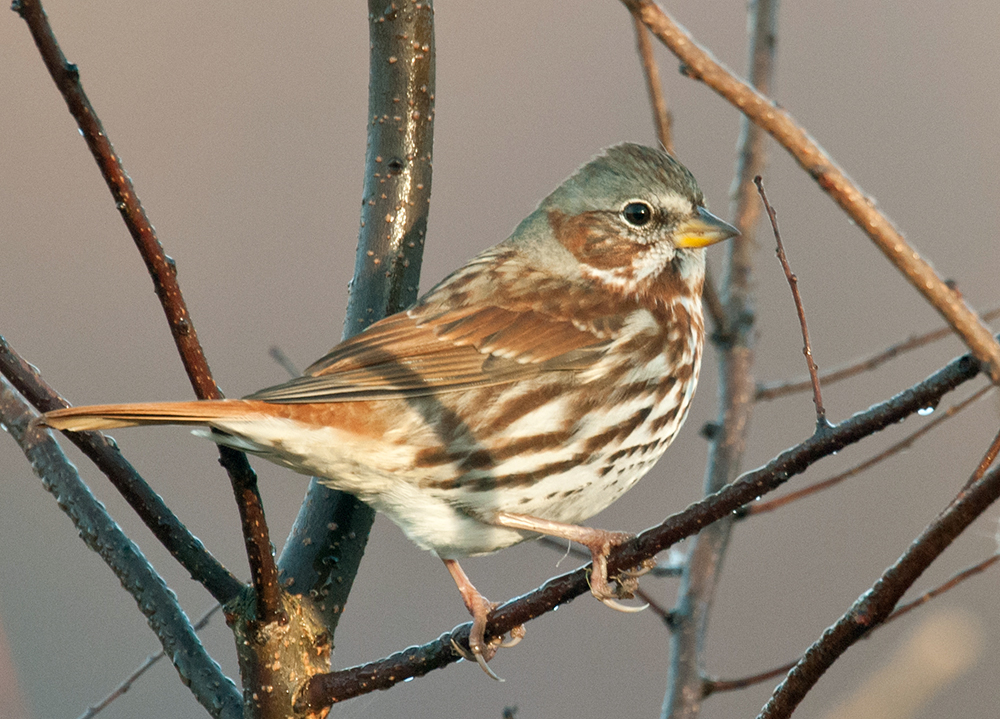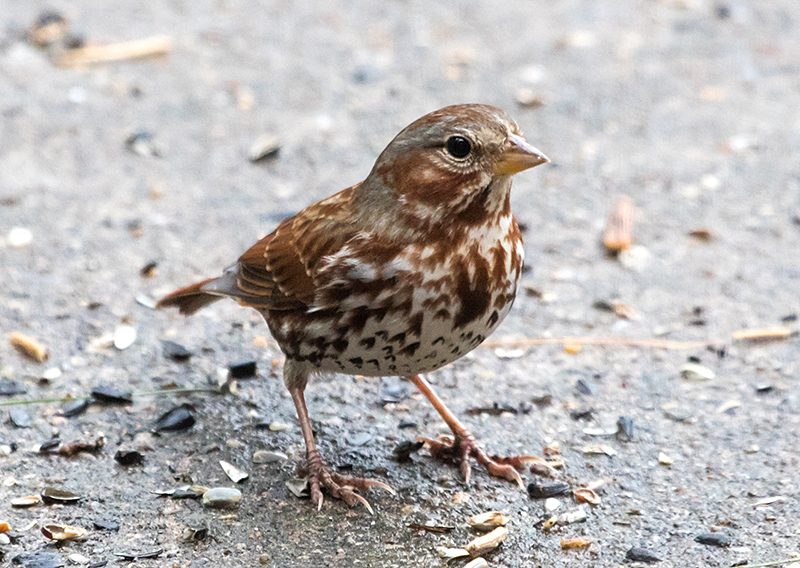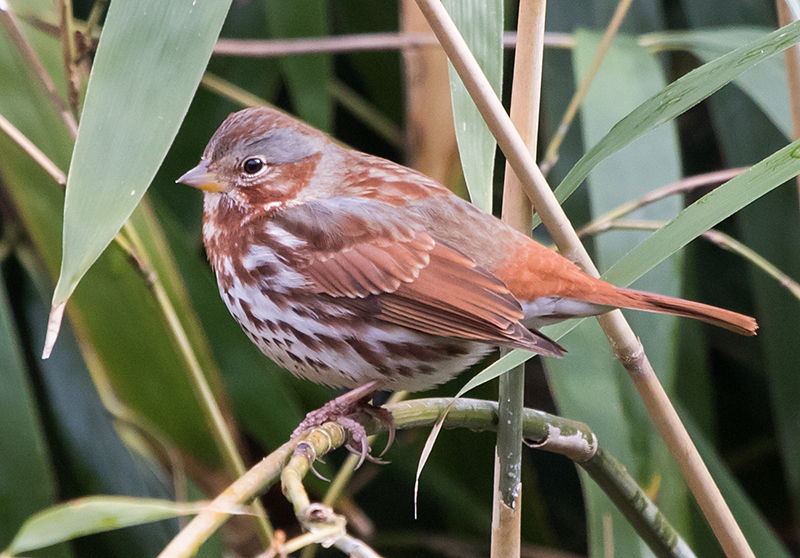| Early Spring Date: | March 9 |
| Late Spring Date: | April 19 |
| Best Dates to See in Spring: | March 11 - April 2 |
Spring: Fox Sparrows are not common in the Washington metro area. A small number spend the winter here, but few are seen until the end of March when a large wave passes through on the way to breeding grounds in Canada. Some stop at Monticello Park.
Fall: Only a couple of Fox Sparrow have ever been seen at Monticello during fall migration.
Where to See Them in the Park
Fox Sparrows usually feed on the ground. You sometimes can see them in mixed flocks feeding in the yards of houses near the far end of the park. They also feed on the ground on the ridge and in other parts of Monticello.
Physical Description

Fox Sparrows are large and robust, about the size of a Swainson's Thrush. They have bright rufous streaks on much of their body. Other sparrow species have some rufous feathering, but not as much as a Fox Sparrow. The sexes are similar.


The size of the bird and the amount of rufous feathering are better identification aids than any individual fieldmark.
Vocalizations
The song is a loud, rich warble that goes down toward the end.
Hear the vocalizations of the Fox Sparrow.Notes
The Fox Sparrow has a wide range throughout North America. There are four races who all look and sound different. The ones who pass through Monticello are the Red, or Taiga, subspecies. Taiga is northern conifer forest. (It is pronounced TIE-ga.) The Taiga subspecies is the reddest of the four, with the others having grayer plumage that is not as bright. In all likelihood, the Fox Sparrow will be split into four species.
Origin of Names
Common Names: Fox from plumage the color of a Red Fox. Sparrow from the Anglo-Saxon spearwa, which means flutterer.
Genus Name: Passerella means little sparrow, which is inappropriate for this large sparrow.
Species Name: Iliaca means of the flanks, probably from the streaking.
Fox Sparrow video footage
Return to the Index
